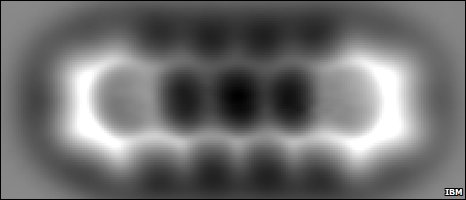Jason Palmer of BBC News brings us an AFM image from IBM Zurich which is simply wonderful: Their measurement of a pentacene molecule using this carbon monoxide tip shows the bonds between the carbon atoms in five linked rings, and even suggests the bonds to the hydrogen atoms at the molecule’s periphery. Breathtaking work by… Continue reading Amazing image of single molecule from IBM Zurich
Amazing image of single molecule from IBM Zurich
